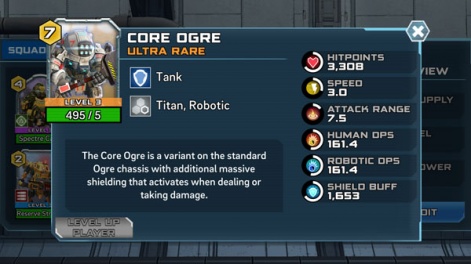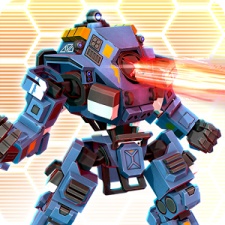Everything that defines Titanfall makes it difficult to bring to mobile.
The first-person shooter series boasts massive action, fluid movement and complex multiplayer battles.
Hence, the announcement in October 2015 that publisher Nexon and developer Respawn had invested in the creation of Particle City, a new mobile-focused studio to make the franchise portable, was something of a surprise.
Titanfall: Frontline, the company’s first attempt, wasn’t a success either.
Certainly it was an interesting approach, but during its soft launch testing in late 2016, the card-collection-battler was deemed not to be delivering “the intense action-packed gameplay synonymous with Titanfall,” and was promptly canned.
Thankfully, Particle City had an ace up its sleeve: it was already working on another Titanfall game - Titanfall: Assault.
“When we started thinking about bringing Titanfall to mobile, we looked at every genre,” explains CEO Larry Pacey.
“The brand is all about fast, fluid action. Titanfall: Assault was the place we wanted to land.”
Titanfall is all about fast, fluid action.Larry Pacey
In fact, the cancellation of Frontline appears to have been the spur Particle City needed to double down - literally and figuratively - on its remaining game.
Some of the community tools and the video sharing system from Frontline were repurposed, and instead of having two studios - one in LA within the main Respawn office, and one in Orlando - working on two games, everyone was now working towards a common goal.
Two masters
When it comes to inspiration, it’s clear Titanfall: Assault has been shaped as much by trends in F2P mobile game design as its titular console licence.
The real-time strategy game is set up as a head-to-head PVP experience, in which players spawn units from their base and gain victory within a four minute session either by controlling the level hardpoints for long enough to reach a score of 100, or by directly taking out their opponent’s main turret.
This means it feels a bit like a mobile MOBA. Clash Royale’s influence looms large in terms of the slowly increasing resources you use to create your units. Similarly, these are unlocked and levelled up using a crate-based card gacha system.
That the gameplay is more complex than other mobile MOBAs is testament to how Particle City’s designers have implemented Titanfall’s fluidity of movement, however.
While there are distinct lanes through each of the four maps with which the game ships, the agile pilot units can jetpack over the level, making the fight for each hardpoint a fast-changing and often attritional affair. And while a couple of the maps are small and tight, another is sprawling, while another still includes dynamic elements including tripwires that can be used to launch surprise attacks.
Perhaps the most significant part of the gameplay is session pacing.
But perhaps the most significant part of the gameplay is session pacing. For the first minute, players only have access to three pilots and four burn cards; these are tactical support units such as sentry guns, missile attacks and grunt troops.
Titans become available later, which combined with an acceleration in available resources after two minutes means the pace ratchets up considerably towards a conclusion.
Tactical advantage
“We’ve tried to make a RTS game that’s uniquely Titanfall,” explains senior game designer Hugh Shelton.
“Hardpoint domination is a key mode in Titanfall, and all our maps have the ‘verticality’ you’d expect from a Titanfall game,” he says of the pilots’ wide movement.
Of course, going mobile has also created opportunities to go beyond the existing Titanfall IP.
“Respawn allowed us to take some liberties to expand the universe,” Shelton reveals.

Perhaps the best examples are the new titan variants such as the Nuke Atlas, which is a version of the standard Atlas that’s armed with a melee-focused hammer maul and which triggers a nuclear explosion when it’s destroyed.
More generally, another layer of tactics is provided by each units’ abilities against human troops versus their strength against robotic units.
Titans might be the game’s apex predators, but the session pacing and the agility and ability of pilots means players won’t be successful if they just rely on the grunt provided by metal suits.
Indeed, during extensive internal playtesting, it’s never been the case one deck loadout or strategy has trumped all others. This conclusion will, no doubt, be tested when the game goes live and thousands of players attempt to hone their competitive edge.

The ability to keep high-end gameplay dynamic will be a constant challenge. Shelton thinks the amount of complexity in the game - generated from the interplay of maps, tactics, 18 titans, 16 pilots and 18 burn cards - gives the designers plenty of scope to mix things up, though.
First battles
As for the inevitable question of whether Titanfall: Assault eventually ends up a mobile eSport, he’s excited but cautious.
“I think the potential is there but it really depends on the community,” he says, adding the mobile eSports market is yet to find its feet.
And, with its launch getting closer, Titanfall: Assault has to overcome more mundane challenges first; generating downloads, maintaining day seven+ retention, getting players into guilds, and keep everyone progressing through the content.
Only then will it become clear whether its mobile-specific version of ‘massive action, fluid movement, and complex multiplayer battles’ can successfully fit within both the Titanfall universe and the mobile gaming community.
Titanfall: Assault is released for iOS and Android devices on 10 August.





















